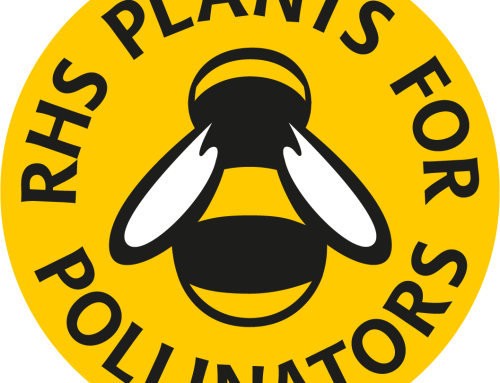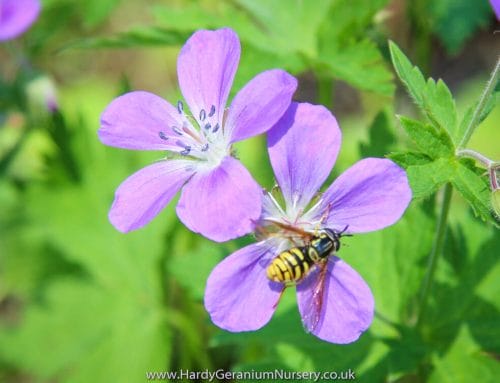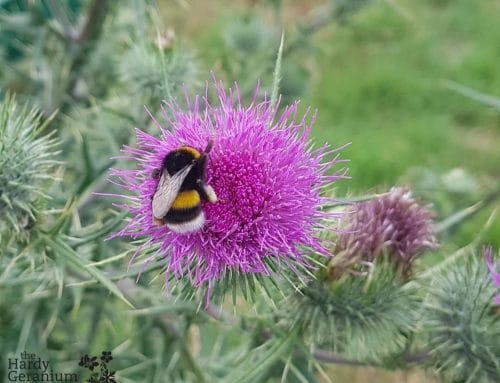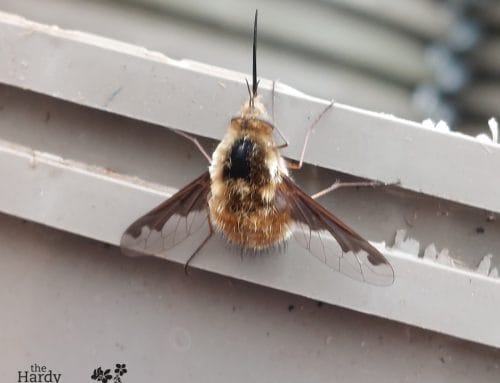Credit for this blog goes to my sister, Sherralyn Clarke, who teaches science to GCSE and A-Level students. It was prompted by my nephew, last winter when he wanted to know how Bee’s can find flowers and so she explained to us about Karl von Frisch and the experiments he carried out. Personally I found it fascinating so I asked her to write it up so I could share it with you all…
How do we know what bees can see?
Our understanding of honeybee vision has developed through a combination of physiological, anatomical and behavioural studies.
Over 100 years ago, Karl von Frisch was the first person to conduct behavioural studies on honeybees, using classical conditioning techniques such as those used by Pavlov on his dogs. He trained honeybees to feed from a dish of sugar-water placed on blue-coloured card along with an array of different shades of grey card. His logic was that if a honeybee was colour-blind it wouldn’t be able to distinguish the blue card from the grey card. It was important that a range of grey cards were used, as, if the honeybees couldn’t detect the colour blue, they would still see is a shade of grey anyway. Wherever the blue card was placed the honeybees always landed on the dish on the blue card.
Anatomical studies have enabled us to understand the structure of honeybees’ eyes, which are complex and fascinating. Physiologically, honeybees have 2 different types of eye. They have 3 ‘ocelli’ located on top of their heads; these help the honeybee to navigate by detecting light intensity. They also possess 2 compound eyes, each made up of between 7,000 to 8,500 individual lenses (depending on the type of honeybee). Every lens, or ‘facet’, is connected to a tiny tube, and each tube contains 8 cells. Different cells respond to different wavelengths of light: yellow-green, blue and ultraviolet (UV) light.
There aren’t any cells that respond to red light which explains why, when Frisch repeated his experiment with a red card, the honeybees didn’t land on it any more or less than any of the other grey cards.
Colour perception is based on how pigments in eyes absorb and reflect light. Most insects only have 2 visual pigments and whilst they can see some colours, they cannot see a full colour spectrum so are rather like a human who is colour blind. However, honeybees are amongst a small group of insects that possess 3 visual pigments (UV light, blue and green as described above). This enables them to detect wavelengths across the much of the visible light spectrum. They have a similar range to humans and can differentiate between individual colours and colour combinations, but it is shifted away from the red end of the spectrum and towards the blue.
Whilst honeybees cannot detect the colour red, the range of light that they can detect includes UV light that we cannot see. Many petals that look to be of one colour often have a pattern on them that guides the bee to the nectary, that is invisible to humans. ‘Bee purple’ is a combination of yellow light and UV light; humans only register it as yellow, but it is the most attractive colour to bees, who see it as purple.
The ability to detect UV light is clearly essential to a bee’s survival. Even clouds cannot block out UV light, but when bees are deprived of it, they lose their motivation to forage and eventually are kicked out of the hive to die.
Frisch also proved that honeybees use their eyes to detect polarised light. Humans cannot detect this, but honeybees can use it to navigate and approximate the time of day. This enables them to locate sources of food and successfully return to the hive. They are then able to communicate this information to the colony through the famous ‘waggle dance’ (also studied by Frisch) so that their co-workers can locate the same food source.
The sophistication of the honeybee’s eye in its ability to detect colour, polarisation and intensity of light has inspired scientists to try to replicate it artificially so that it can be used in robotics. The closest we have come so far was a decade ago and required a team of scientists to match the innovation and complexity of Mother Nature and millions of years of evolution!
You can see visible light, UV light and IR light images of a range of flowers, including hardy geraniums here: ‘Flowers in ultraviolet’ http://www.naturfotograf.com/UV_flowers_list.html (02.02.2020) (scroll down to ‘Geraniums’)
‘Karl von Frisch’ https://en.wikipedia.org/wiki/Karl_von_Frisch (31.03.2020)
‘Karl von Frisch’ http://www.animalbehavioronline.com/frisch.html (02.02.2020)
‘Color vision’ https://genent.cals.ncsu.edu/color-vision/ (02.02.2020)
‘How bees see and why it matters’ https://www.beeculture.com/bees-see-matters/ (03.02.2020)
‘Do bees see colour’ https://schoolofbees.com/can-bees-see-in-color/#How_Do_We_Know_That_Bees_See_Color (03.02.20202)
‘Database shows how bees see world in UV’ https://www.bbc.co.uk/news/science-environment-11971274 (03.02.2020)
‘Artificial bee eye could improve robotic vision’ https://www.newscientist.com/article/dn19272-artificial-bee-eye-could-improve-robotic-vision/ (31.03.2020)
Written by Sherralyn Clarke
You may also like our other blog about Bee’s and pollinators G’s for Bees • The Hardy Geranium Nursery




